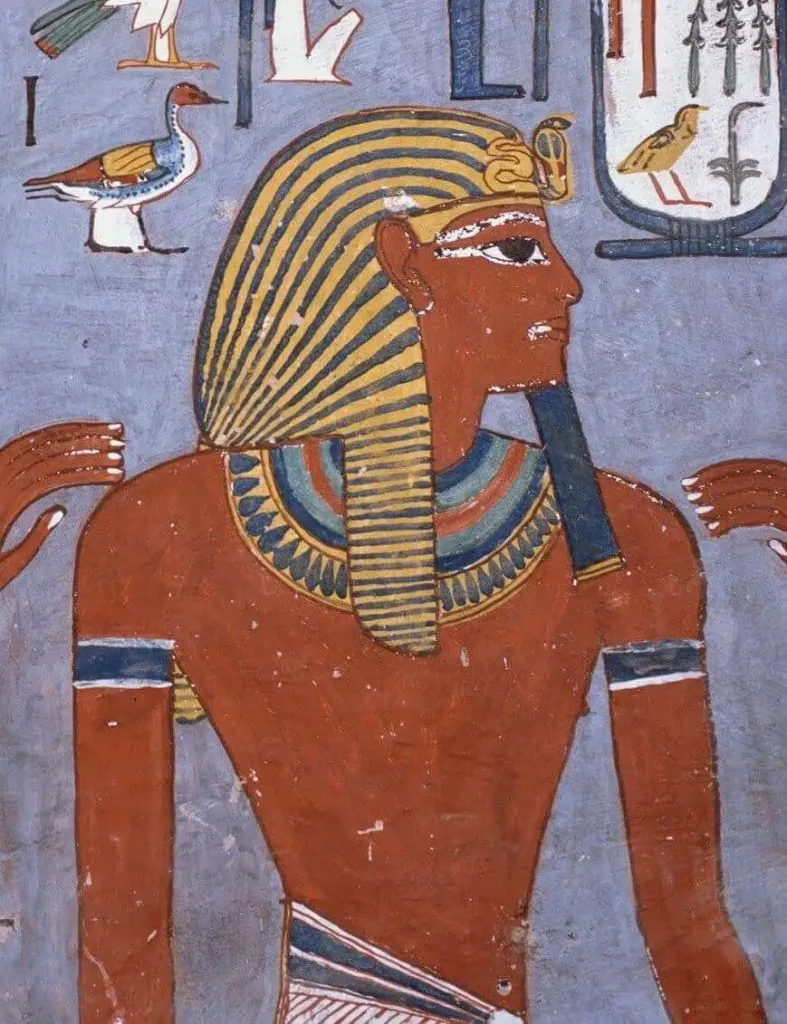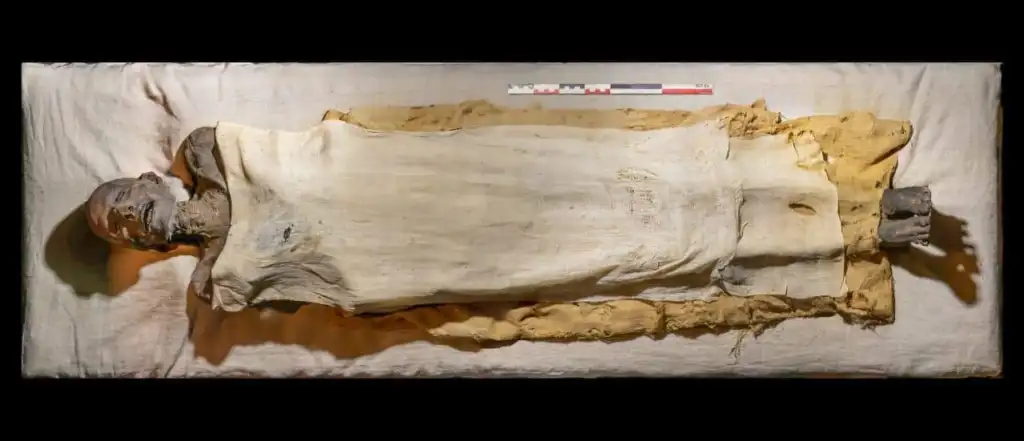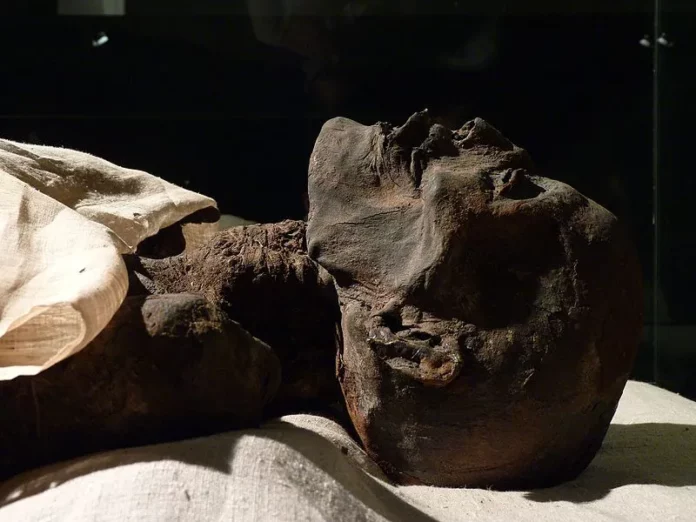The mummy of Ramesses I was stolen from the Royal Cachette in Deir el-Bahari (TT320) by the Abu-Rassul family of grave robbers. It was then sold by Turkish vice-consular agent Mustapha Aga Ayat in Luxor to Dr. James Douglas, who brought it to North America around 1860.
It is currently believed that the mummy, now identified as Ramesses I, was stolen from Egypt and displayed in a private Canadian museum for many years before being repatriated. While the mummy’s identity cannot be conclusively determined, it is most likely that of Ramesses I based on CT scans, X-rays, skull measurements, and radio-carbon dating tests conducted by researchers at Emory University, as well as aesthetic interpretations of family resemblance. Additionally, the mummy’s arms were crossed high across his chest, a position reserved solely for Egyptian royalty until 600 BC. Dr. Douglas purchased Egyptian antiquities for his friend Sydney Barnett, who placed the mummy in the Niagara Museum and Daredevil Hall of Fame in Niagara Falls, Ontario, Canada. The mummy remained there, its identity unknown, among other curiosities and so-called freaks of nature for more than 130 years.

When the museum owner decided to sell the property, Canadian businessman William Jamieson purchased its contents. With the help of Canadian Egyptologist Gayle Gibson, Jamieson identified their great value. Inscriptions reveal that Ramesses I reigned for about one year and four months. He was buried in a small, hastily prepared tomb in the Valley of the Kings at Thebes. Later, during a time of political upheaval, the mummy was disinterred and moved to a secret resting place.

The mummy became part of the collection of a small museum in Niagara Falls, Canada, in the mid-19th century. When the museum closed in 1999, the collection was acquired by the Michael C. Carlos Museum at Emory University in Georgia, which then verified the mummy’s identity as Ramesses I. In 2003, the mummy was returned to Egypt. Although Ramesses I was the founder of the 19th Dynasty, his brief reign mainly serves to mark the transition between the reign of Horemheb, who had stabilized Egypt in the late 18th Dynasty, and the rule of the powerful kings of his own dynasty, particularly his son Seti I and grandson Ramesses II.

The mummy of Ramesses I, dating to the New Kingdom, 19th Dynasty, during his reign from around 1292-1290 BC, is now housed in the Luxor Museum, Luxor.




